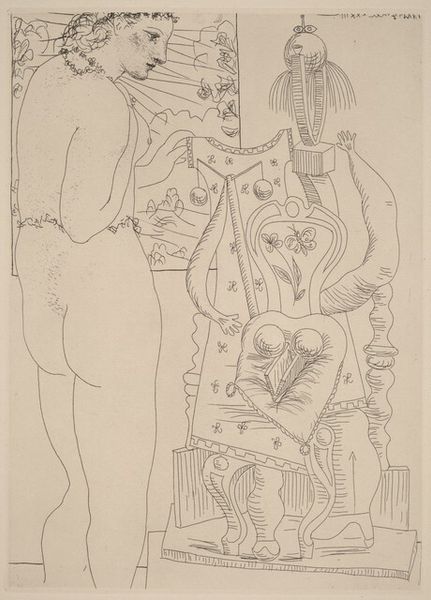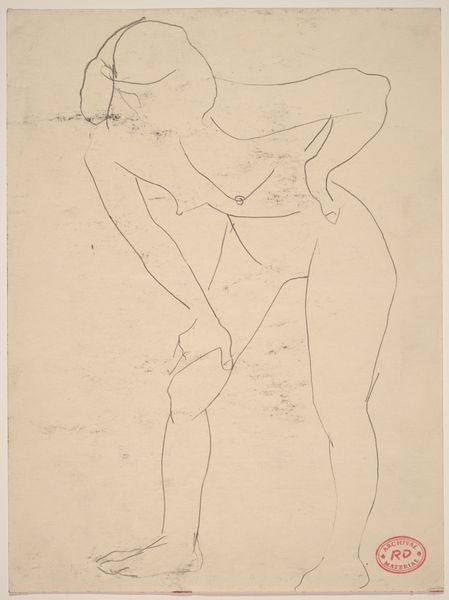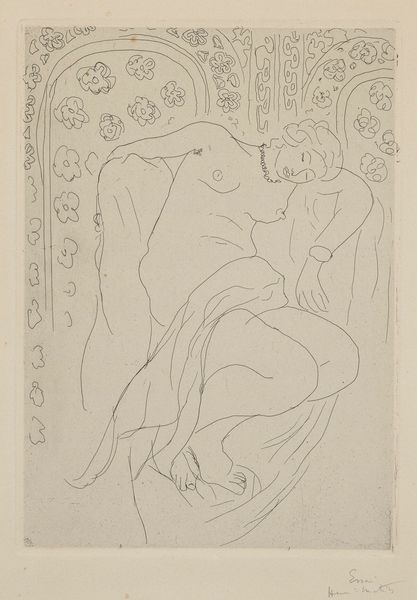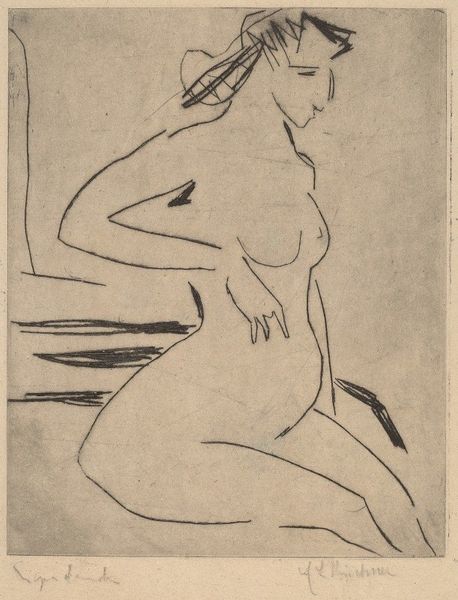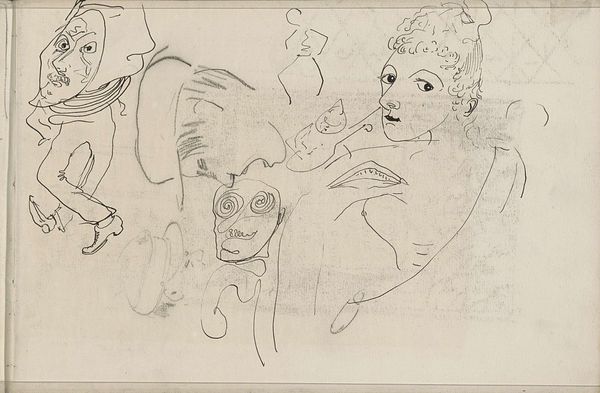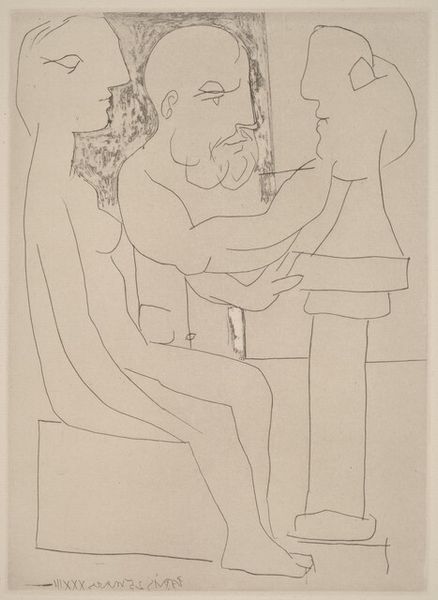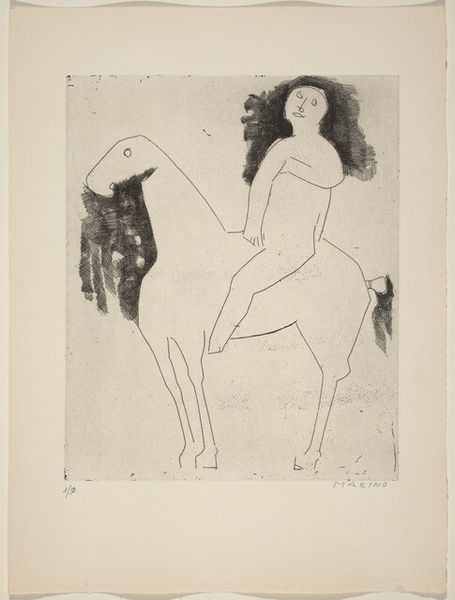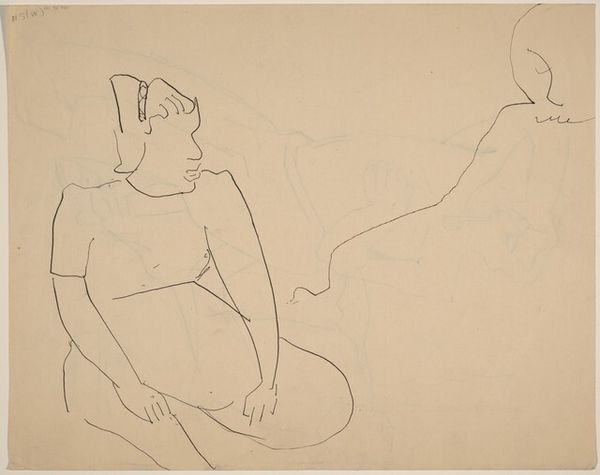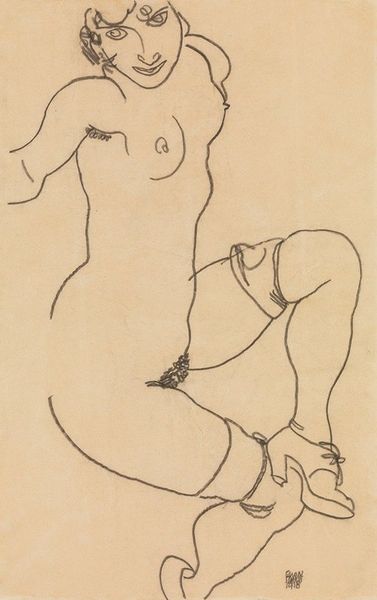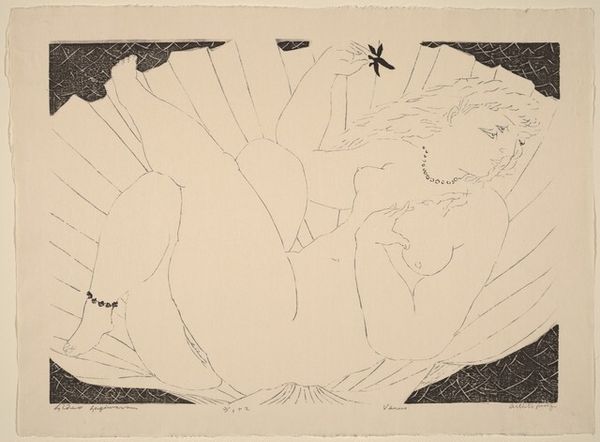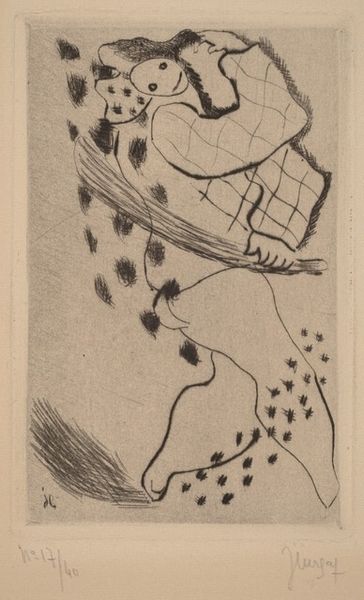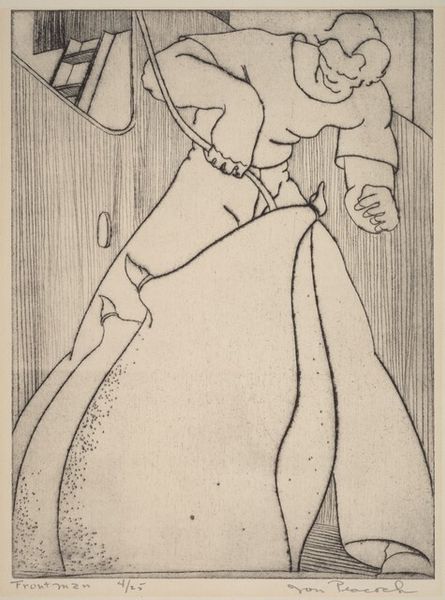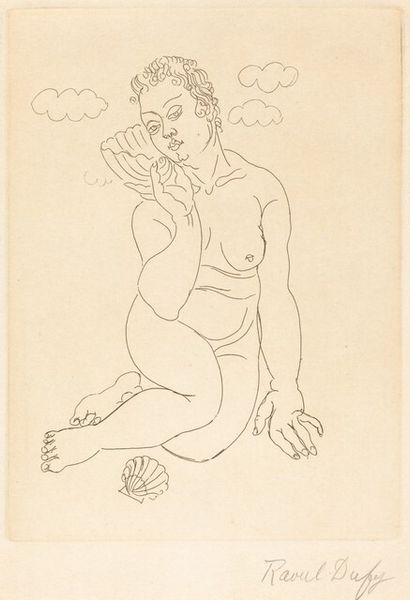
Anxious and Introspective Woman in the Sculptor's Studio (Femme songeuse et inquiète dans l'atelier de sculpteur) 1933
0:00
0:00
drawing, print, etching
#
portrait
#
drawing
#
cubism
# print
#
etching
#
figuration
#
nude
Copyright: National Gallery of Art: CC0 1.0
Editor: Here we have Picasso’s 1933 etching, *Anxious and Introspective Woman in the Sculptor's Studio*. The lines are so simple, yet the mood feels quite heavy, laden with thought. What do you see in this piece, especially concerning the relationship between the figures and the sculpted head? Curator: The arrangement is ripe with symbolism. Notice how the seated woman is perched *above* the sculpted head. Consider the psychological weight of that positioning. Is she, perhaps, surpassing the figure of artistic authority or grappling with the very nature of creativity itself? Editor: That's interesting. The head also seems to be gazing directly at her. Is it judgment, inspiration, or something else entirely? Curator: Consider the ancient archetype of the muse. Often depicted as a source of inspiration, here, the woman’s posture—hunched and contemplative—suggests the muse isn’t some passive ideal. Instead, she’s wrestling with inner turmoil, potentially connected to her role or perhaps even her relationship to the male artist and his creative prowess, as represented by the imposing sculpted head. Editor: And what about the standing nude figure? It almost feels like a ghost or shadow. Curator: Precisely. That standing figure is partially erased, acting as a spectral witness or memory. It reflects the fluctuating nature of artistic identity and perception. Are we seeing the idealized form of art itself? Or is Picasso revealing art's intrinsic vulnerability, the constant erasure and reconstruction that are integral to creation? These lines become cultural memories and question the stability of what we think we know about creation, and what those archetypes mean to different artists and how their gender affects this idea of creation. Editor: I never would have considered all of those layers! The personal anxiety becomes almost universal through these symbols. Curator: Indeed. Picasso gives form to the invisible, rendering thought and feeling as tangible image and leaving us to ponder upon these archetypes. It really encapsulates not just the individual's experience, but the cultural anxiety within artistic endeavors at large.
Comments
No comments
Be the first to comment and join the conversation on the ultimate creative platform.
